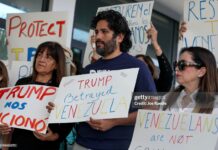
News Americas, NEW YORK, NY, Fri. May 29, 2015: Time and again, when we hear of immigrant voters or the swing voting bloc it is always assumed they are Hispanics.
But often ignored in the mix, is the Asian voting bloc, which like the Caribbean bloc, gets overlooked and taken for granted almost all the time.
Yet a new report by Sanam Malik of the Center for American Progress tells us as we mark another Asian-Pacific American Heritage Month, politicians, businesses and leaders in this country should pay attention to this emerging bloc.
As the report, ‘Asian Immigrants in the United States Today,’ points out, more immigrants have come to the United States from Asia than from any other region in the world, making Asians, not Hispanics, the fastest growing immigrant population in the United States.
The Asian community, made up primarily of Chinese, Filipino, Indian, Vietnamese, Korean, and Japanese immigrants, represents approximately 40 percent of the U.S. foreign-born population. Sixty-six percent of Asian-Americans were born in another country, compared with only 37 percent of Latinos.
Asian immigrants own some 1.5 million businesses across the U.S. with total sales and receipts of $506 billion and they hold the fastest-growing cumulative buying power at more than $700 billion, as of 2013.
Many come here through family-sponsored visas as well as temporary work permits and student visas. For instance, 70 percent of the 316,000 H-1B visas approved in 2014 were for Indian immigrants, the report points out.
Seventy-percent of adult U.S. Asians are either U.S.-born or naturalized citizens, according to the American Community Survey conducted by the U.S. Census Bureau.
Yet, Asian immigrants comprise a significant portion of the undocumented population. An estimated 1.5 million of the 11.5 million undocumented immigrants living in the United States in 2013 were from Asian countries while some half a million undocumented Asian Americans are eligible for temporary relief under President Obama’s Deferred Action for Childhood Arrivals, or DACA, and Deferred Action for Parents of Americans and Lawful Permanent Residents, or DAPA, programs, says Malik.
Further, the Pew Research survey found that Asian-American citizens, whether native born or foreign born, are about equally likely as citizens in the general public to be registered to vote.
Seventy-two percent of Asian-American citizens are registered, compared with 75 percent of citizens in the general public, Pew says. Most importantly, Asian Americans say immigration reform that is comprehensive and offers a pathway to citizenship is among the issues of concern to them – coupled with the economy, health care and education.
So why are they ignored? Mostly says Malik, it’s because of language and cultural barriers.
But as we head into 2016 and the Presidential election, politicians should be paying close attention to this group and not overlooking them.
They must reach beyond the barriers and speak to them – not at them. Most importantly, they cannot be taken for granted and their issues, including the issue of immigration reform, must be addressed. It will be interesting to see if Piyush “Bobby” Jindal, the Indian-American current Governor of Louisiana, Vice Chairman of the Republican Governors Association and Presidential hopeful 2016, will be able to make inroads into this voting bloc for his Party given its rancor towards immigrants and immigration reform or if he will even try.









